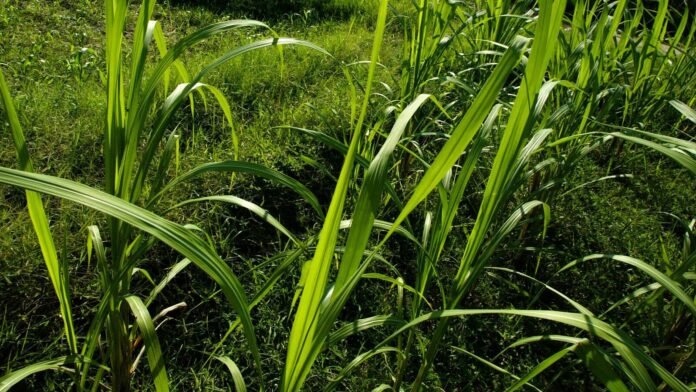Sugarcane alone is not sufficient to achieve the 20% blending target, said Union Food and Public Distribution Secretary Sanjeev Chopra on Tuesday.
In India, distilleries generally produce ethanol from molasses, a by-product of sugar. “However, only sugarcane route is not sufficient to achieve the 20% blending target, therefore, ethanol from food-grains such as maize, damaged food grains (DFG) and rice available with Food Corp of India (FCI) has also been allowed,” Chopra said while addressing a seminar on maize and ethanol.
To achieve the target of 20% ethanol blending with petrol by 2025, about 1016 crore liters of ethanol would be required and about 334 crore liters of ethanol would be required for other uses. For this, about 1700 crore liters of ethanol producing capacity would be required considering the plant operates at 80% efficiency.
The requirement of food-grains for ethanol production is quoted at around 16.5 million tonnes (MT). To achieve the target for grain-based distilleries, there is a need for assured procurement of maize at the minimum support price (MSP) and an evolving enabling ecosystem for the whole sector as necessity, Chopra said.
Globally, maize is a primary feedstock for production of ethanol as it consumes less water and is economical. However, in India, the use of maize as a feedstock for ethanol production is yet to gain momentum. Currently, grain-based distilleries are producing ethanol from food-grains by using either DFG like broken rice or FCI’s rice. there is hardly any production of ethanol from maize by grain-based distilleries in India. Use of multiple feedstocks for ethanol production will ensure feedstock security thereby not putting any stress on the availability of any single feedstock. Moreover, maize based ethanol is more economical and water efficient.
Globally, maize is a primary feedstock for production of ethanol as it consumes less water and is economical. However, in India, the use of maize as a feedstock for ethanol production is yet to gain momentum. Currently, grain-based distilleries are producing ethanol from food-grains by using either DFG like broken rice or FCI’s rice. Production of ethanol from maize by grain-based distilleries in India is negligible.
“Use of multiple feedstocks for ethanol production will ensure feedstock security thereby not putting any stress on the availability of any single feedstock. Moreover, maize based ethanol is more economical and water efficient,” informed Chopra.
The production of maize in the country is consistent. However, due to low demand of maize, farmers are not getting appropriate prices for their produce. Production of ethanol from maize is expected to increase the demand of maize, fetching a better price to farmers. Because of export demand, maize prices are currently high. The market price of maize typically remains below MSP, resulting in lower cultivation area for the crop.
Union Agriculture Secretary Manoj Ahuja expressed the need to have a more targeted and region-specific approach in promoting cultivation of maize in the country.
According to the government, the use of maize for ethanol production would assure better prices and consistent demand for the cereal, leading to more cultivation of the crop that consumes less water as compared to paddy. Further, distilleries too shall be assured about the availability of feedstock in the market which will not only create a win-win situation for both distillers and farmers but also would be of great help in conservation of water and environment.
Emphasising on environment friendly fuel, Union Minister for Food and Public Distribution Piyush Goyal said, “The target of E20, a blend of 20% ethanol with petrol, has been advanced, so that India can have clean fuel with propagating farmers’ interests. Environment friendly fuel like ethanol has been on the top priority list of PM Modi, which has resulted in more than doubling of ethanol blending in two years.”
“In the last nine years, the sugar sector has been self-sufficient with more than 99.9% payment to farmers for previous season. “Now ethanol will support maize farmers in increasing their income and bringing growth with stability in the lines of sugarcane farmers,” Goyal said.
The Petroleum Ministry has also shown willingness to incentivize ethanol production from maize with a medium-term stable pricing policy. Indian Institute of Maize Research will work on better varieties, while distilleries need to collaborate with Cattle & Animal Feed Manufacturers’ Association (CLFMA) on quality standards of dried distillers grain solids (DDGS), so that distilleries can tap huge opportunities in the sector.
With integrated strategy of ethanol, DDGS and other by-products from maize, higher profitability could be ensured for farmers, distilleries and overall industry, which would also cater to meet almost 50% need of ethanol for fuel through grain-based distilleries.
In April, the government said that India requires to increase maize production by 10 MT over the next five years from the current 34 MT amid growing demand for ethanol production and to meet demand from the poultry industry.
Maize is the third most grown cereal crop in India after paddy and wheat. However, in terms of overall value, maize is one of the most important cereal crops in the world.





